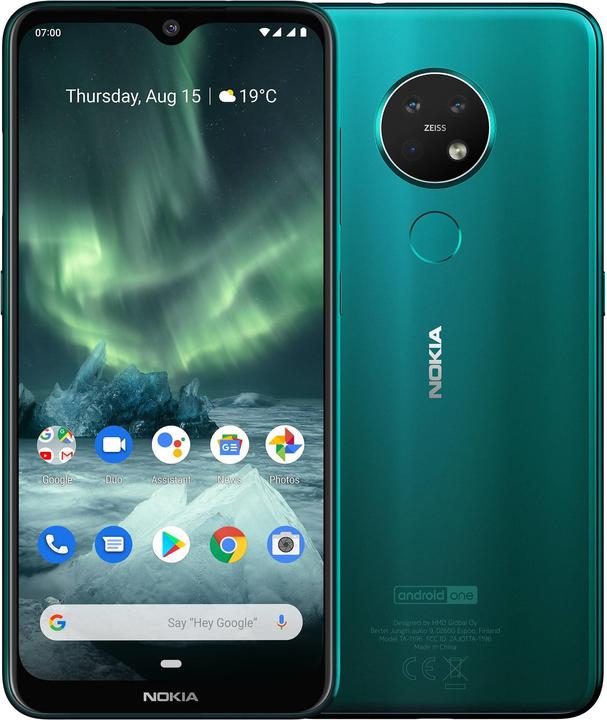

Nokia 7.2 First Look: Old, new, camera, business... what?
The Nokia 7.2 looks really good. With a never-before-seen back in a never-before-seen colour, the device impresses at first glance. But the software could break the smartphone's back.
Journalists bustle around the mostly white headquarters of the optics company Zeiss in Oberkochen near Stuttgart. Sunglasses lie on shelves, ophthalmological equipment is proudly displayed and butter pretzels are laid out. But that's not why video producer Stephanie Tresch and I are here. We are here because of a smartphone that promises a lot: the Nokia 7.2.
Nokia has teamed up with Zeiss, which is now a tradition, and has installed Zeiss cameras in the Nokia 7.2. That promises a lot. But after the first hands-on, a question arises: Does the software put a spanner in the works of the camera hardware?
The Finns' risky game
The Nokia 7.2 makes little sense. Both in terms of design and market positioning. Before we get to the big problem with the camera, let's take a look at the rest of the confusing package, which only allows one conclusion to be drawn: Nokia is ambitious and hungry.

The Nokia 7.2 looks damn good. Especially in green. The other two colours, black and grey, can't keep up, even if the grey phone is quite a welcome contrast in the black and white soup of smartphones. The back is made of milky glass, which makes the surface slightly rough and massively improves the grip. However, the 6.3-inch diagonal phone feels quite heavy at 180 grams. Somehow there is a disconnect between what you see and what you feel. Because 180 grams per se is not heavy.
Underneath the display is a Qualcomm Snapdragon 660 system-on-a-chip (SoC). This is a far cry from the flagship, the Snapdragon 855, but it is decent. The 660 performs well in a basic hardware configuration, but will never win any prizes. However, it does provide a very attractive price tag. The Nokia 7.2 is very far below the 1000 mark that flagships like so much.
As nice as the hardware and price may be, Nokia's understanding of its own target group is strange. With a price and a camera of this calibre, the target group would be the market in India/Asia. This translates more or less like this for the local market: teenagers who like cameras and low prices.
However, Nokia wants to attract business customers with the 7.2. At the Zeiss event, there is talk of "Best in Business", but at the following press event, according to colleague Jan Johannsen, this is no longer the case. Company names like "Deutsche Bahn" are mentioned. Well, that would be 318,000 phones that Nokia would sell just like that. Sounds good, would be good. Because if Nokia can pull this off, or a deal of a similar size, then the company could invest a lot more money in research and development. The Finnish company has more than enough ambition, as the 7.2 proves. But the suspicion persists that five minutes longer in the pipeline would have done the device good. In addition, Nokia is currently endearing itself to data protectionists with the announcement that data will no longer be transferred to China. The data servers are now located in Hamina, Finland. This is exactly why I wish Nokia success with business customers, because the smartphone world needs more initiatives like this.
Camera versus software
Nokia has saved money up to this point. But when it comes to the camera, that's where the Finns really go for it. I know from photography that Zeiss doesn't deliver anything that isn't planned and engineered down to the last detail. That's why the 48 megapixels delivered by the triple cam on the back of the phone are just the beginning of the image quality that the smartphone can deliver.
Could.
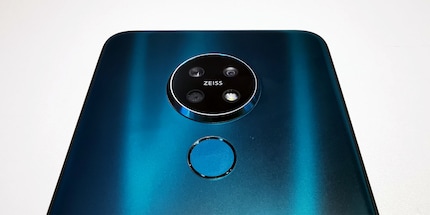
I'm riffing a bit about the camera now, but want to preface this by saying that none of the things I'm criticising can't be fixed with a software update to make it acceptable. In addition, it is often the case at preview events that phones are not equipped with the software that will run on the retail models. This is the case at the Zeiss event.
With smartphones, unlike with cameras, it's not just the mechanical components of the camera system that make the difference. This is because the aim of a smartphone camera is to deliver as much clear image information as possible. Then the software takes over and does the maths. For the software to be able to calculate, it needs solid hardware. And this is precisely the point where Nokia really shouldn't have cut corners, but did anyway.
The Qualcomm Snapdragon 660 can inherently work with camera information of up to 25 megapixels. In other words, the SoC can process this amount of data without any problems. A picture goes into your gallery without you having to accept any loss of performance. With the Nokia 9 PureView - the one with the many cameras at the back - this was the aspect that ultimately sunk the phone for photography fans. After clicking, you can wait a good ten seconds for the image to appear in your gallery. With the 7.2, the effect is not quite as bad, but you still have to wait several seconds.
If the pictures were great, then I could live with it under certain circumstances. But if the hardware has forwarded the data to the software, then it does its thing. To put it very simply. And the software does extremely strange things.
No photo that you take with a smartphone goes into the gallery as it was taken. In every phone, the software applies filters, corrections and colour adjustments to the raw data from the camera. The best example here is the Google Pixel, which creates a depth of field effect with one camera lens, whereas other phones usually use two lenses. This is done purely by software. You can reduce the influence of the software, especially on Chinese phones, but you can't switch it off completely.
The Nokia 7.2 is strangely fiddling around. This image can serve as an example.
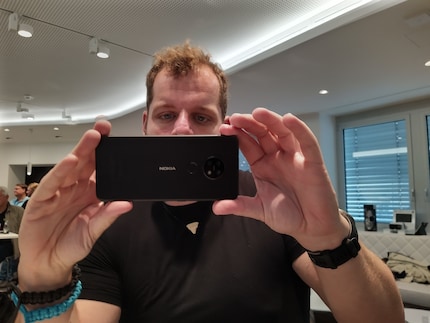
In and of itself not a problem. But on closer inspection, two things stand out. Firstly, there is the lamp in the background, which is either supposed to be blurred by the software, but that went wrong.
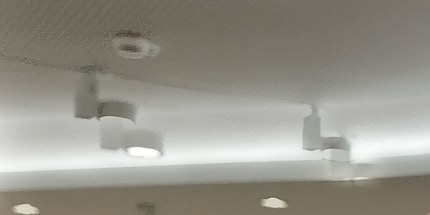
That would still work, but then I suddenly have two index fingers on my right hand in the picture. What went wrong there? The light in the room was excellent, even if it was LED lights, which produce flickering if the shutter speed is too high. Because LEDs don't light up in the eye of the camera, they flash. They simply flash faster than your human eye can perceive.
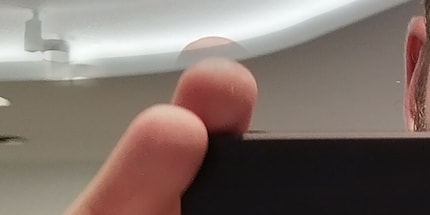
Nothing that can't be fixed with software updates. Because if Nokia can get this under control, then the 7.2 is a camera monster that will probably be a sight to behold.
Journalist. Author. Hacker. A storyteller searching for boundaries, secrets and taboos – putting the world to paper. Not because I can but because I can’t not.
Interesting facts about products, behind-the-scenes looks at manufacturers and deep-dives on interesting people.
Show all



